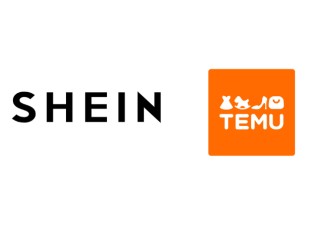Routine optimization and the patentability hitch
30 November 2021

Innovative activity is not a onetime affair. Many innovations rely on the activities involving the manipulation of variables of known compounds, formulations or combinations, and the optimization of process variables such as proportions, physical size, temperature or pressure. In other cases, it may involve optimization of a device, systems or processes. Changes in these variables can, at times, lead to inventions that are novel and inventive and therefore patentable. However, the journey of these inventions through the examination process of the patent office is not an easy walk. The patent application will face many difficulties, as in many cases the examiner will rule such changes as an obvious and predictable improvement normally known to the person skilled in the art.
In the United States, for example, Section 103(a) of the patents act (35 U.S.C. §103(a)) deems such inventions as obvious and hence not patent-eligible. In India, there was no such categorical restriction placed on the patent eligibility under the Patent Act, 1970 before the law’s 2002 amendment, as obviousness was not a statutory objection at the hands of the examiner. However, Indian examiners had silently adopted the doctrine of optimization as enshrined in the U.S. case In re Aller (220 F.2d 454 (CCPA 1955)) to treat such inventions as non-patentable. In this case, the court ruled that a change in temperature or concentration or both is a non-patentable modification when the result achieved is only optimum reaction conditions that differ from the cited prior art in degree but not in kind. This set a precedent in rejecting optimization claims where general conditions are disclosed in the cited prior and applicant claims to discover the optimum or workable ranges by refinement through experimentation as a routine adopted by examiners.
This doctrine gained credence in cases where the changes were found to lead to expected results. Such modifications are treated by the examiner to be an obvious modification only in degree without changing the kind of the conditions known in the prior art, and are thus refused patent protection. Does this mean every patentable modification must not fall within the reach of a prima facie finding of obviousness when the ranges of a claimed composition overlap the ranges disclosed in the prior art? Or does there exist any remedy with the patentee to rebut that presumption? If we examine some court cases, we will find that there are, in fact, certain situations where this presumption can be rebutted by the patentee.
The position in the U.S.
For instance, the court in In re Aller did not rule out the possibility of patent eligibility where the claimed process parameter “produce[s] a new and unexpected result which is different in kind and not merely in degree from the results of the prior art.” Or, in other cases, the court did not rule out eligibility where the prior art taught away from the claimed range, or where the parameter was not recognized as “result-effective.” (In re Applied Materials, Inc., 692 F.3d 1289 (Fed. Cir. 2012)). In yet another case, the court ruled did not rule out eligibility if the prior art discloses very broad ranges which may not invite routine optimization. (Genetics Inst., LLC v. Novartis Vaccines & Diagnostics, Inc., 655 F.3d 1291 (Fed. Cir. 2011)). In In re Peterson (315 F.3d 1325 (Fed. Cir. 2003)), the court recognized several ways by which the patentee may rebut that presumption that “a prima facie case of obviousness typically exists when the ranges of a claimed composition overlap the ranges disclosed in the prior art.” The USPTO categorically recognized and included two situations in its Manual of Patent Examining Procedure (MPEP) to guide the examiner: “that the range is critical for achieving unexpected results” and “that the prior art teaches away from the claimed parameter(s)”.
As per 35 U.S.C. §103(a), patent may not be obtained “if the differences between the claimed invention and the prior art are such that the claimed invention as a whole would have been obvious … to a person having ordinary skill in the art.” This facilitates the examination of patent applications, and examiners may reject claims that are prima facie obvious over the prior art. If the examiner makes a prima facie showing, the burden shifts to the applicant to come forward with evidence to rebut the examiner’s case. Because the burden shifts to the applicant only if the examiner’s prima facie showing was adequate, precedent developed around the standard of adequacy, including cases holding that types of differences that commonly separated a proposed claim from the prior art were sufficient to support an examiner’s prima facie showing.
The position In India
Turning to the position taken in India on the doctrine of optimization, Indian examiners also firmly believe that routine optimization is an indicium of obviousness. Patents may not be granted to “obvious” inventions under Section 2(1)(j) and (ja). Moreover, the role of the reasonable expectation of success in determination of obviousness is a decisive factor in negating the grant of patents in such cases. Unlike the USPTO, there no such guidance available to the Indian examiner in the Manual of Office Practice and Procedure. However, examiners use obviousness under Section 2(1)(ja) to reject claims directed to optimization of known parameters if there is no surprising effect or unforeseen result. For instance, in Becton Dickinson and Company v. Controller Of Patents & Designs, [OA/7/2008/PT/DEL) [280-2012], the Intellectual Property Appellate Board (IPAB) held that “selection of an optical numerical range by experiments from the publicly known art is merely as an exercise of ordinary creativity of a person skilled in the art, and hence it does not qualify to be called as having an inventive step.” The IPAB also observed that “obviousness cannot be avoided simply by showing of some degree of unpredictability in the art so long as there was a reasonable probability of success.”
In another appeal against refusal of a patent application relating to an improved syringe, the IPAB ruled that “the difference between the claimed invention and the cited prior art is due to application of particular parameters such as size, proportion or relative dimensions or position of the locking mechanism with respect to plunger. These changes in design cannot be considered to have an effect unforeseen in the prior art to qualify as technical advancement as envisaged under Section 2(1)(ja). Further such change in design has not resulted in any particular change in the function for operation of the locking device with an unforeseeable advantage. The invention in the present case resides in the choice of particular dimensions of locking mechanism and the plunger from a limited range of possibilities. Such choice can be made by the person skilled in the art through normal design procedures. Moreover, such choice has not shown to produce any unexpected technical effect. Therefore, we agree with the respondent 1 that the invention involving displacement of locking device does not involve an inventive step.” (Becton, Dickinson and Company v. Controller of Patents, [OA/10/DEL/PT/ 2012 ] 2nd November 2012)
Overcoming obviousness based on routine optimization
It is true that the doctrine of routine optimization gets its force from the presumption of obviousness to prevent patent applicants from obtaining patents on minor modifications in variables such as physical size, temperature or pressure etc. There is a strong presumption that increasing or decreasing these variables would have a predictable result at the hands of the person skill in the art. Turning to the examiners, the presumption of obviousness and rejections of optimization claims that are prima facie obvious over the prior art applies in a particular case, the applicant can rebut this presumption if it is shown that these variations result in surprising or unexpected results. In European Patent Office (EPO) practice, the optimization obviousness is guided by the precedents set by the EPO board. In many cases, the subject matter was found not to involve an inventive step, particularly when the problem addressed was to find a suitable compromise between different parameters. However, it is evident that a proper rebuttal by the patentee on the suggested reasons, as in USPTO guidelines, can possibly negate the effect of the doctrine of routine optimization in Europe and other jurisdictions, including India.
Conclusion
It is evident from the above that there is a paucity of Indian case law pertaining to the determination of routine optimization criteria. Quite obviously, examiners, the IPAB and the courts in India look for case laws of other major patent jurisdictions in the assessment of inventive step where claims pertain to optimization of parameters. The USPTO has issued clear guidelines to allow patents where the patentee proves unexpected results or where prior art teaches away. The European Patent Office lists the decisions of the appeal board. In India, there is no specific guidelines for the examiners to deal with such cases, except that the explanation under Section 3(d) treats change in particle size as non-patentable except in cases where it leads to enhanced therapeutic efficacy.
Curiously, there are no guidelines as to how to deal with claims involving the optimization of process parameters such as temperature, pressure and concentration, etc., in chemical cases or shape, size and location in mechanical, electrical or electronics devices in India. In such a situation, raising objections on optimization claims in general by an examiner without legal or court precedence at times appears arbitrary. It is, therefore, essential that guidelines like USPTO or EPO board cases or Indian IPAB and court decisions are included in the Manual of Patent Office Practice and Procedure as well.
There also appears to be no blanket ban on patent eligibility based on changes in process parameters or shape and size criteria in India. However, expert advice would be worthwhile to deal with such objections raised in a First Examination Report (FER) and rebut them. This is possible particularly in cases where the unexpected or surprising advantages are attributed to the optimization of parameters if the claimed parameters produces a new and unexpected result which is different in kind and not merely in degree from the results of the prior art (In re Aller), or if the parameter was not recognized as “result-effective” (In re Applied Materials), or where claimed ranges or changes are taught away in the prior art or If the prior art discloses very broad ranges which may not invite routine optimization (Genetics Inst.), as discussed above.








